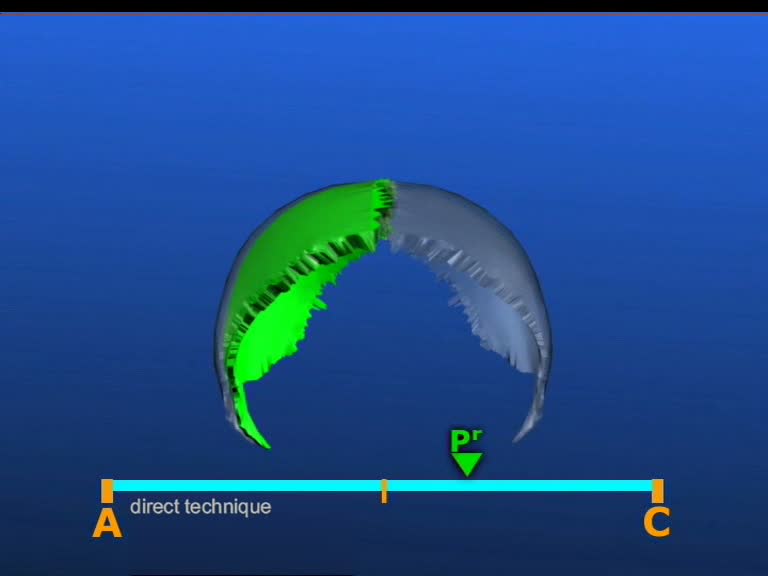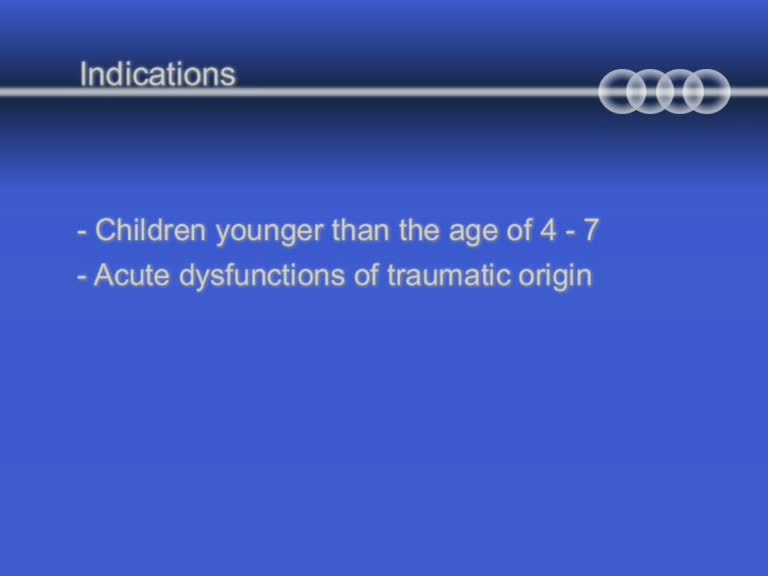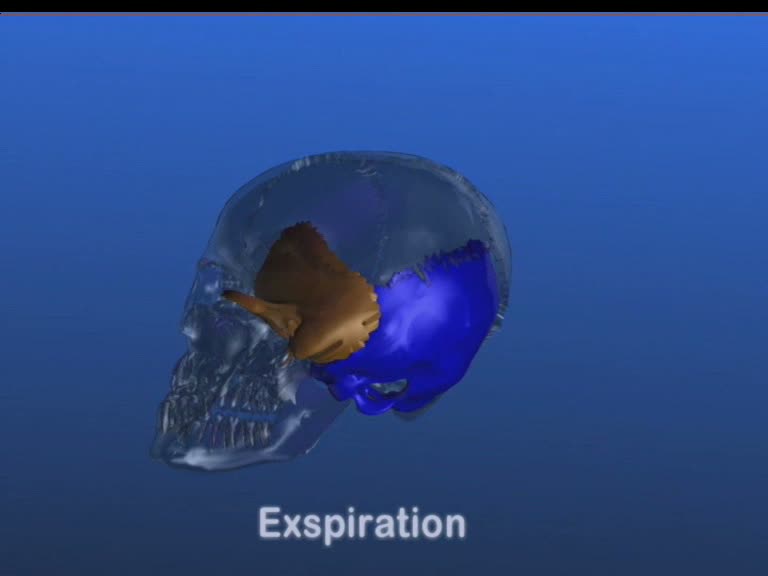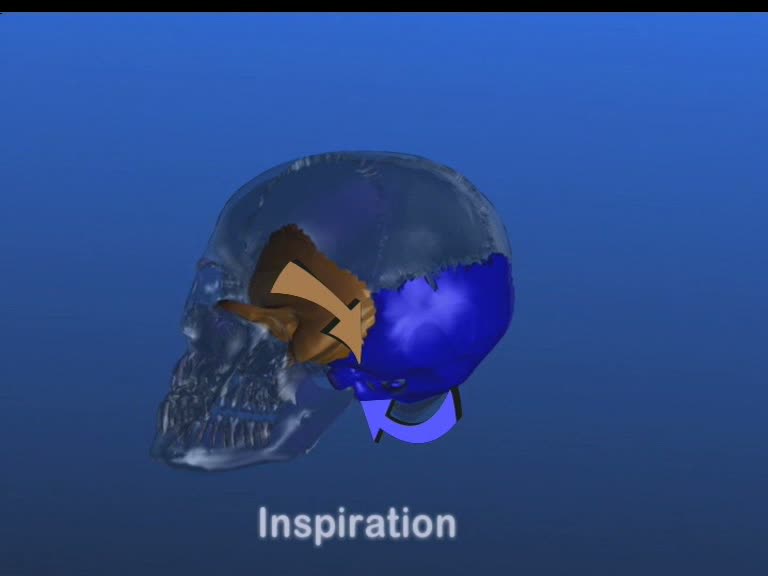With the help of a direct technique the parietal bone is brought in the direction of C, meaning into the direction of the restricted mobility
 Treatment: direct technique
Treatment: direct technique
 With the help of a direct technique the parietal bone is brought in the direction of C, meaning into the direction of the restricted mobility. One should use very, very little force, staying below the threshold where the participating structures start resisting (contracting).
With the help of a direct technique the parietal bone is brought in the direction of C, meaning into the direction of the restricted mobility. One should use very, very little force, staying below the threshold where the participating structures start resisting (contracting).
Indications for this technique are, for example, children younger than the age of 4-7, acute dysfunctions of traumatic origin. Indirect and direct approaches can also be combined.
 Treatment: Opposite to physiological movement using the example of the occipito-mastoid suture:
Treatment: Opposite to physiological movement using the example of the occipito-mastoid suture:
At first one sees the normal biomechanical movement.
This opposing physiological movement is indicated for some very severe traumatic dysfunctions.
 In this example, one goes with the occipital bone, as in an indirect technique, into the direction of the greatest mobility, meaning into flexion. At the same time, the temporal bone is brought or held in internal rotation (=direct technique). A point of balance is established in this position.
In this example, one goes with the occipital bone, as in an indirect technique, into the direction of the greatest mobility, meaning into flexion. At the same time, the temporal bone is brought or held in internal rotation (=direct technique). A point of balance is established in this position.
This principle of treatment can also be done synchronous with the primary respiration. The flexion of the occipital bone is augmented during the inspiration phase, while the temporal bone is held in internal rotation. During the expiration phase one just follows both bones passively into extension and internal rotation.








